-
 Bitcoin
Bitcoin $106,437.2012
0.82% -
 Ethereum
Ethereum $2,442.5287
0.82% -
 Tether USDt
Tether USDt $1.0005
-0.02% -
 XRP
XRP $2.1812
-0.27% -
 BNB
BNB $645.1327
0.45% -
 Solana
Solana $146.2379
0.39% -
 USDC
USDC $0.9999
-0.01% -
 TRON
TRON $0.2751
0.92% -
 Dogecoin
Dogecoin $0.1662
-0.23% -
 Cardano
Cardano $0.5827
-1.22% -
 Hyperliquid
Hyperliquid $37.5225
0.04% -
 Bitcoin Cash
Bitcoin Cash $479.0877
4.02% -
 Sui
Sui $2.7846
-3.27% -
 Chainlink
Chainlink $13.3576
0.84% -
 UNUS SED LEO
UNUS SED LEO $9.0252
-1.20% -
 Stellar
Stellar $0.2455
-1.07% -
 Avalanche
Avalanche $18.0680
-1.81% -
 Toncoin
Toncoin $2.8948
-1.07% -
 Shiba Inu
Shiba Inu $0.0...01164
-1.65% -
 Litecoin
Litecoin $85.0637
-0.06% -
 Hedera
Hedera $0.1526
-0.89% -
 Monero
Monero $316.2941
0.78% -
 Ethena USDe
Ethena USDe $1.0003
-0.04% -
 Polkadot
Polkadot $3.4113
-1.87% -
 Dai
Dai $1.0000
-0.01% -
 Bitget Token
Bitget Token $4.4488
5.16% -
 Uniswap
Uniswap $7.1740
3.09% -
 Pi
Pi $0.5968
11.43% -
 Pepe
Pepe $0.0...01010
-0.65% -
 Aave
Aave $264.3189
0.40%
What does it mean when the price breaks through the psychological barrier but the trading volume does not cooperate?
A breakout without volume often signals weak market conviction, highlighting the need for confirmation before making trading decisions.
Jun 24, 2025 at 10:49 pm
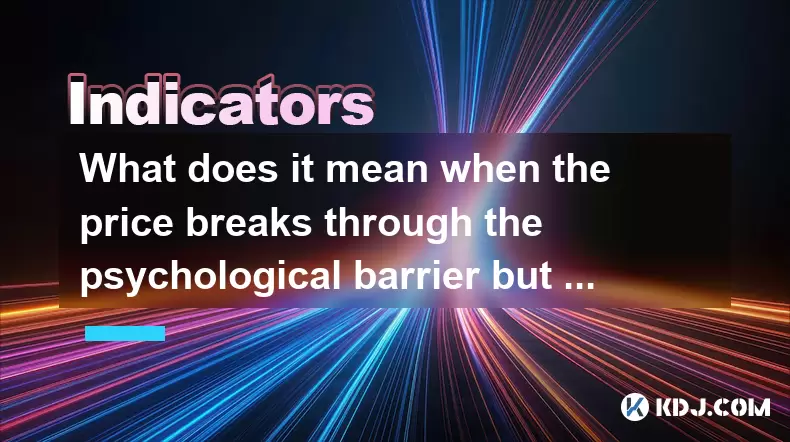
Understanding Psychological Barriers in Cryptocurrency Trading
In the cryptocurrency market, psychological barriers refer to specific price levels that traders and investors perceive as significant due to historical context or emotional attachment. These levels often act as support or resistance zones. For example, when Bitcoin approaches $30,000 or Ethereum nears $2,000, these round numbers are considered psychological thresholds. Traders may hesitate, take profits, or place stop-loss orders at these levels, creating a self-fulfilling prophecy of price reactions.
When a cryptocurrency's price breaks through such a level, it typically signals strong momentum. However, this movement becomes questionable if trading volume does not increase alongside the breakout. Volume is a critical indicator of market participation and conviction behind price movements. A breakout without volume can indicate a lack of genuine interest or belief from large players in the market.
The Role of Trading Volume in Confirming Breakouts
Trading volume serves as a validation tool for price action. In traditional technical analysis, a breakout accompanied by high volume suggests that institutional and retail investors are actively participating in the move. This gives more credibility to the new price level holding as support or resistance.
Conversely, when price moves past a key level but trading volume remains flat or declines, it raises concerns about the sustainability of the move. This could mean several things:
- The breakout was triggered by automated algorithms or short-term traders.
- Institutional investors are not buying into the rally.
- There’s a lack of consensus among traders regarding the asset’s future value.
Volume divergence like this often precedes a reversal or consolidation phase, where the price retraces back to the previous range.
Possible Causes of a Price Break Without Volume Support
There are multiple scenarios where a cryptocurrency might experience a price breakout without corresponding volume growth:
- Short squeezes: In leveraged markets, especially on futures exchanges, a sudden spike in price can trigger margin calls and forced liquidations. This can temporarily push prices higher even without broad-based buying pressure.
- Whale manipulation: Large holders (commonly referred to as whales) may manipulate price by placing substantial buy or sell orders to create false breakouts.
- Algorithmic trading: High-frequency trading bots can generate rapid price movements without real demand backing them up.
- Market noise: Sometimes, the market experiences volatility due to news events or social media hype, which can cause temporary breakouts that aren’t supported by fundamentals or volume.
Each of these situations shows that price alone isn't enough to confirm strength. Volume must align with the movement to suggest a legitimate shift in market sentiment.
How to Interpret and Respond to Such Market Behavior
For traders and investors, understanding how to interpret a breakout without volume is crucial. Here’s how you can approach such a situation:
- Wait for confirmation: Avoid entering trades immediately after a breakout if volume doesn’t support it. Wait for a retest of the broken level or observe whether the price continues to move in the same direction with increased volume.
- Use other indicators: Combine volume analysis with tools like Moving Averages, Relative Strength Index (RSI), or Bollinger Bands to assess momentum and potential reversals.
- Watch order books: Analyzing depth charts and order books can help determine whether the breakout is being driven by real buyers or artificial activity.
- Monitor social sentiment: Platforms like Twitter, Reddit, or Telegram can provide insight into whether the breakout is gaining organic traction among retail investors.
Reacting too quickly to unsupported breakouts can lead to losses, especially in volatile crypto markets. It’s essential to remain patient and use additional data points before making decisions.
Case Studies: Historical Examples in Crypto Markets
Looking at past examples helps illustrate how breakouts without volume support tend to behave:
- In early 2021, Bitcoin broke above $40,000 briefly but failed to sustain the move due to low volume. It soon pulled back to the $35,000 range before eventually rallying again with stronger volume.
- During late 2022, Ethereum tested the $2,000 psychological level multiple times, yet each time volume remained muted, indicating weak buying pressure. The price ultimately fell below that level and continued its downtrend.
- In altcoin markets, smaller-cap tokens often show fake breakouts where price surges rapidly without matching volume, only to collapse shortly afterward — a sign of pump-and-dump schemes or whale manipulation.
These examples highlight the importance of volume confirmation when assessing the validity of breakouts around psychological levels.
Frequently Asked Questions
Q: Can a breakout still be valid without high volume?
While high volume strengthens the reliability of a breakout, it’s not always mandatory. In some cases, especially during sideways consolidations, breakouts can occur on low volume but still hold. However, traders should look for follow-through in the next few sessions to confirm the breakout's legitimacy.
Q: How do I differentiate between a real breakout and a fake one?
A real breakout typically sees increasing volume, sustained price action above the level, and positive momentum indicators. Fake breakouts often occur on low volume, fail to hold above the level, and are followed by sharp reversals.
Q: Should I sell if a breakout lacks volume?
Not necessarily. If you already own the asset and the fundamental outlook remains positive, you may choose to hold. However, avoid buying into the breakout and consider tightening your stop-loss if the price starts reversing.
Q: What tools can help analyze volume and breakouts effectively?
Tools like On-Balance Volume (OBV), Volume Weighted Average Price (VWAP), and candlestick volume analysis can help. Additionally, platforms like TradingView offer customizable volume filters and alerts.
Disclaimer:info@kdj.com
The information provided is not trading advice. kdj.com does not assume any responsibility for any investments made based on the information provided in this article. Cryptocurrencies are highly volatile and it is highly recommended that you invest with caution after thorough research!
If you believe that the content used on this website infringes your copyright, please contact us immediately (info@kdj.com) and we will delete it promptly.
- DEX Race Heats Up: Paradigm's Bet on GTE and the Startup Investment Landscape
- 2025-06-25 14:55:12
- Pepe Coin's Wild Ride: Liquidation Zones, Trump's Crypto Crash, and the Allure of APY
- 2025-06-25 14:55:12
- Passive Income, Cryptos, and ROI: Troller Cat Leads the Meme Coin Revolution in 2025
- 2025-06-25 15:00:12
- Cryptos, Buy Now, Beta Version: Riding the Meme Coin Wave with Troller Cat and Beyond
- 2025-06-25 15:00:12
- Athena Bitcoin & Crypto ATMs: Scam Crackdown & Resale Shares?
- 2025-06-25 15:05:12
- Microsoft, Xbox, Layoffs: Navigating the Shifting Landscape
- 2025-06-25 15:05:12
Related knowledge
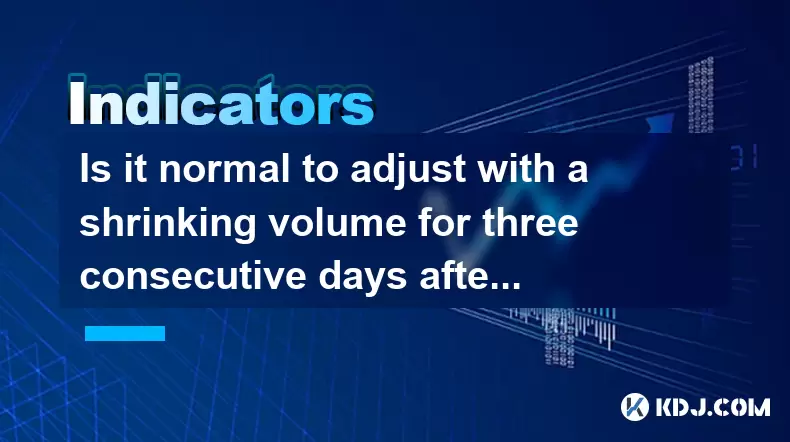
Is it normal to adjust with a shrinking volume for three consecutive days after breaking through the previous high with a large volume?
Jun 25,2025 at 03:49pm
Understanding Volume and Price Relationship in Cryptocurrency TradingIn cryptocurrency markets, volume is a critical metric that reflects the number of assets traded over a specific period. When a cryptocurrency breaks through a previous high with large volume, it typically signals strong buying pressure and market confidence. However, it's not uncommon...
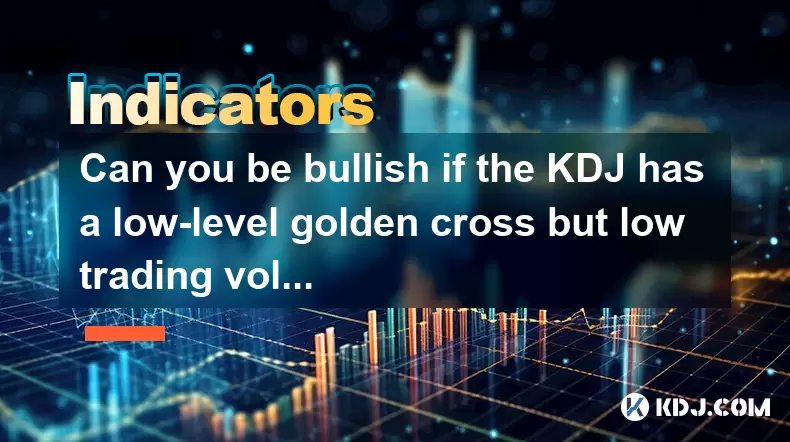
Can you be bullish if the KDJ has a low-level golden cross but low trading volume?
Jun 25,2025 at 03:14pm
Understanding the KDJ Indicator in Cryptocurrency TradingThe KDJ indicator, also known as the stochastic oscillator, is a momentum-based technical analysis tool widely used in cryptocurrency trading. It comprises three lines: the %K line (fast stochastic), the %D line (slow stochastic), and the J line (divergence value). These lines oscillate between 0 ...
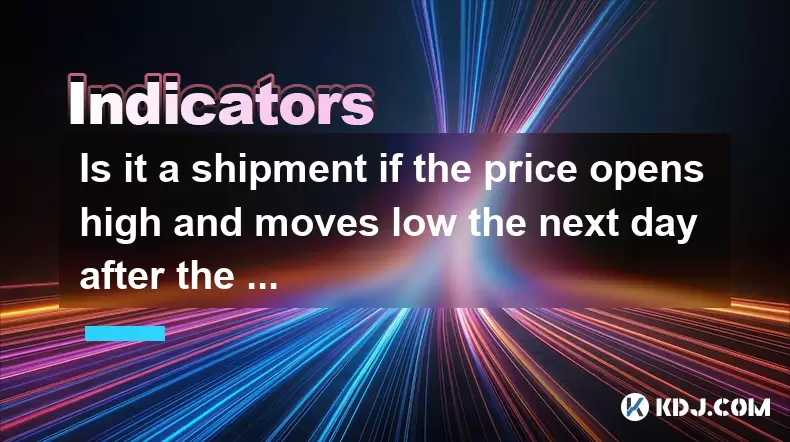
Is it a shipment if the price opens high and moves low the next day after the daily limit with huge volume?
Jun 25,2025 at 12:56pm
Understanding the Concept of a Shipment in Cryptocurrency TradingIn cryptocurrency trading, the term shipment refers to a scenario where large volumes of an asset are sold off rapidly, often leading to a significant price drop. This is typically associated with whale activity or coordinated selling by major holders. When traders observe certain patterns...
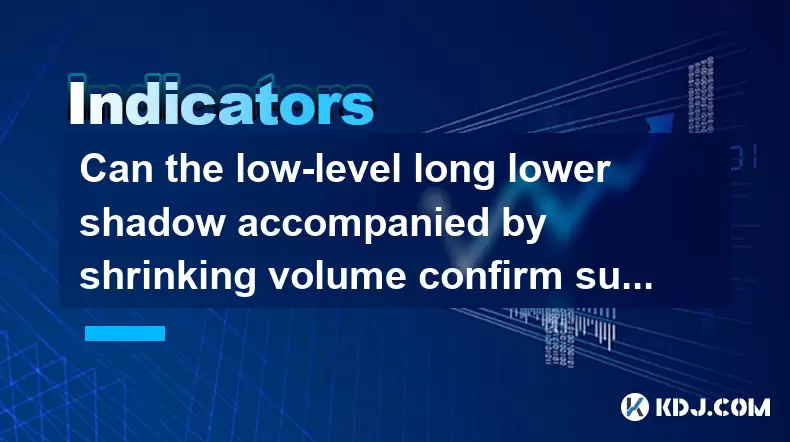
Can the low-level long lower shadow accompanied by shrinking volume confirm support?
Jun 25,2025 at 03:08pm
Understanding the Long Lower Shadow Candlestick PatternA long lower shadow candlestick pattern occurs when a candle closes near its high but has a significantly long lower wick, indicating that sellers pushed prices down during the session but were met with strong buying pressure that drove the price back up. This pattern is often seen as a potential si...
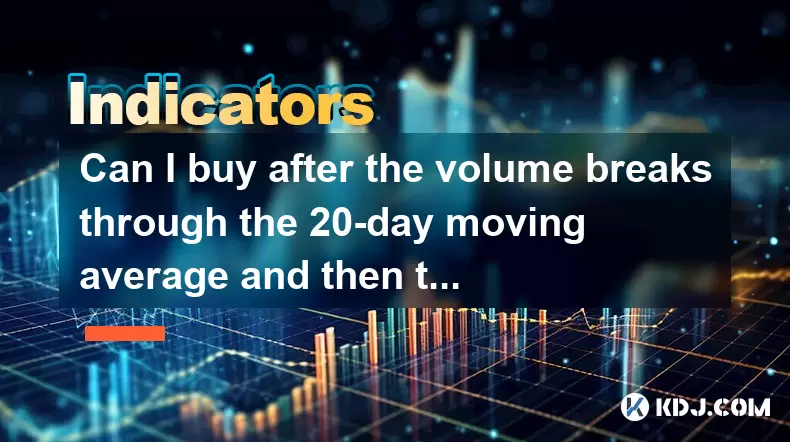
Can I buy after the volume breaks through the 20-day moving average and then the volume shrinks and then the callback is pulled back?
Jun 25,2025 at 12:00pm
Understanding Volume and Moving Averages in Cryptocurrency TradingIn the world of cryptocurrency trading, volume and moving averages are two critical indicators that traders rely on to make informed decisions. The 20-day moving average (MA) is a popular tool used to identify trends and potential entry or exit points. When volume breaks through this aver...
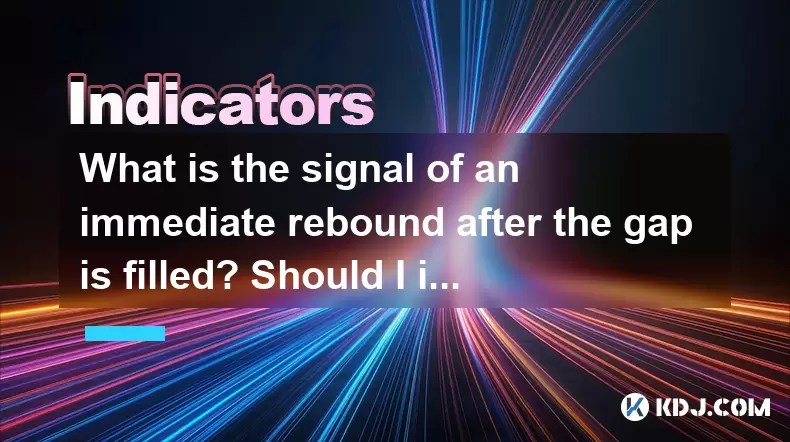
What is the signal of an immediate rebound after the gap is filled? Should I intervene?
Jun 25,2025 at 01:15pm
Understanding Gaps in Cryptocurrency TradingIn cryptocurrency trading, a gap occurs when the price of an asset jumps from one level to another without any trading happening in between. This typically happens during periods of high volatility or after significant news events that impact market sentiment overnight or over weekends. The phenomenon is commo...

Is it normal to adjust with a shrinking volume for three consecutive days after breaking through the previous high with a large volume?
Jun 25,2025 at 03:49pm
Understanding Volume and Price Relationship in Cryptocurrency TradingIn cryptocurrency markets, volume is a critical metric that reflects the number of assets traded over a specific period. When a cryptocurrency breaks through a previous high with large volume, it typically signals strong buying pressure and market confidence. However, it's not uncommon...

Can you be bullish if the KDJ has a low-level golden cross but low trading volume?
Jun 25,2025 at 03:14pm
Understanding the KDJ Indicator in Cryptocurrency TradingThe KDJ indicator, also known as the stochastic oscillator, is a momentum-based technical analysis tool widely used in cryptocurrency trading. It comprises three lines: the %K line (fast stochastic), the %D line (slow stochastic), and the J line (divergence value). These lines oscillate between 0 ...

Is it a shipment if the price opens high and moves low the next day after the daily limit with huge volume?
Jun 25,2025 at 12:56pm
Understanding the Concept of a Shipment in Cryptocurrency TradingIn cryptocurrency trading, the term shipment refers to a scenario where large volumes of an asset are sold off rapidly, often leading to a significant price drop. This is typically associated with whale activity or coordinated selling by major holders. When traders observe certain patterns...

Can the low-level long lower shadow accompanied by shrinking volume confirm support?
Jun 25,2025 at 03:08pm
Understanding the Long Lower Shadow Candlestick PatternA long lower shadow candlestick pattern occurs when a candle closes near its high but has a significantly long lower wick, indicating that sellers pushed prices down during the session but were met with strong buying pressure that drove the price back up. This pattern is often seen as a potential si...

Can I buy after the volume breaks through the 20-day moving average and then the volume shrinks and then the callback is pulled back?
Jun 25,2025 at 12:00pm
Understanding Volume and Moving Averages in Cryptocurrency TradingIn the world of cryptocurrency trading, volume and moving averages are two critical indicators that traders rely on to make informed decisions. The 20-day moving average (MA) is a popular tool used to identify trends and potential entry or exit points. When volume breaks through this aver...

What is the signal of an immediate rebound after the gap is filled? Should I intervene?
Jun 25,2025 at 01:15pm
Understanding Gaps in Cryptocurrency TradingIn cryptocurrency trading, a gap occurs when the price of an asset jumps from one level to another without any trading happening in between. This typically happens during periods of high volatility or after significant news events that impact market sentiment overnight or over weekends. The phenomenon is commo...
See all articles























































































